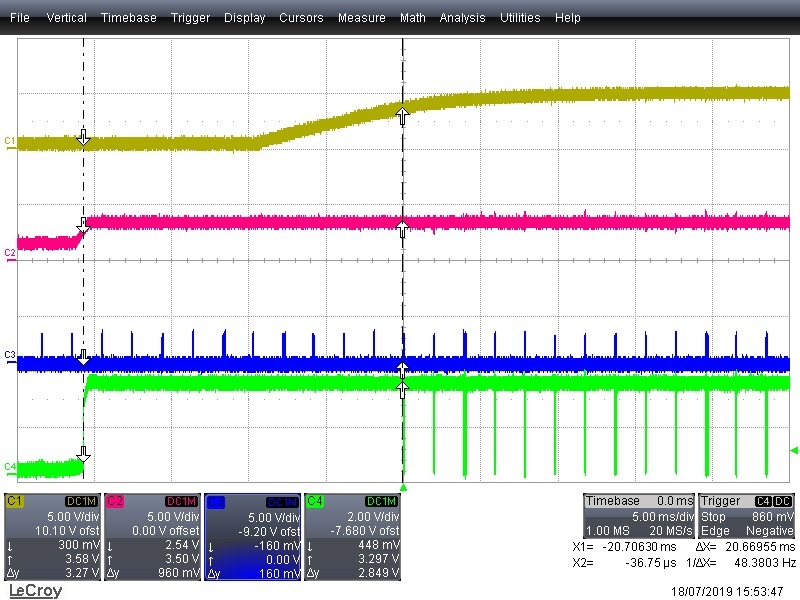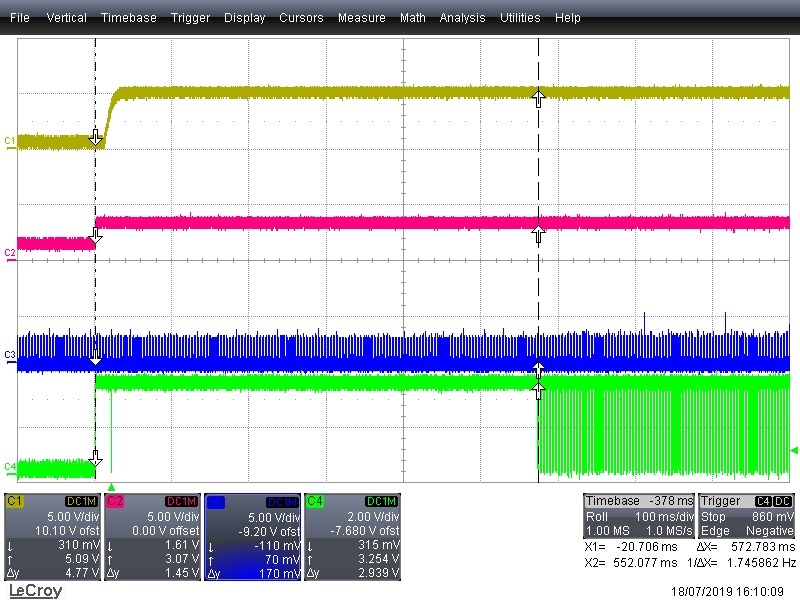I have an ISO1050DUB application which is not powering up correctly at low temperatures.
It appears only during recovery from brown-out conditions (removal of power for around 4 seconds) when tested at -33°C. There is a long delay in RXD data becoming available (up to 9 seconds) which is causing CAN errors.
I have included scope traces below with the following set-up:
Ch1: VCC2 Isolated 5V (ISO1050 pin 8 w.r.t. pin 5)
CH2: VCC1 3V3 (ISO1050 pin 1 w.r.t. pin 4)
Ch3: CAN bus differential signal (CANH-CANL)
Ch4: RXD (ISO1050 pin 2 w.r.t. pin 4)
Power-on at 20°C:
RXD available after both supply rails have stabilized, as expected.
Power cycled off for approx. 4s at -33°C:
Delay in RXD becoming available. This can be up to 9 seconds after power is established which is unacceptable..
I need to know the following:
1. Is this a known behavior?
2. This appears to occur only during brown-out. If so, how long does power have to be removed to guarantee start-up? The application needs to operate down to -46°C.
3. Is there a solution available bearing in mind this is a common circuit used in a number of products so any non-pin compatible part change is unacceptable.
Thanks




